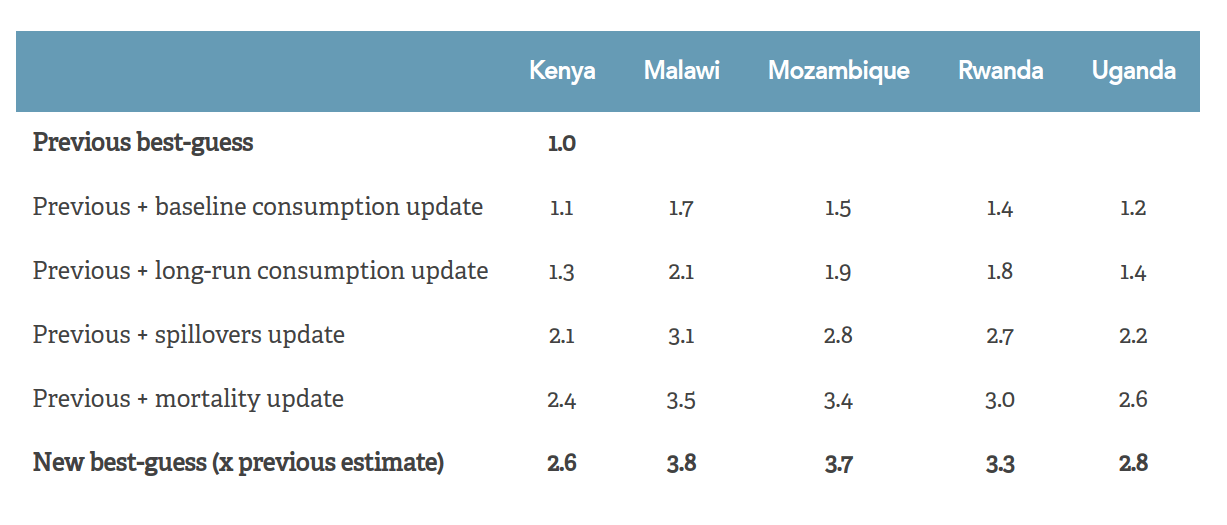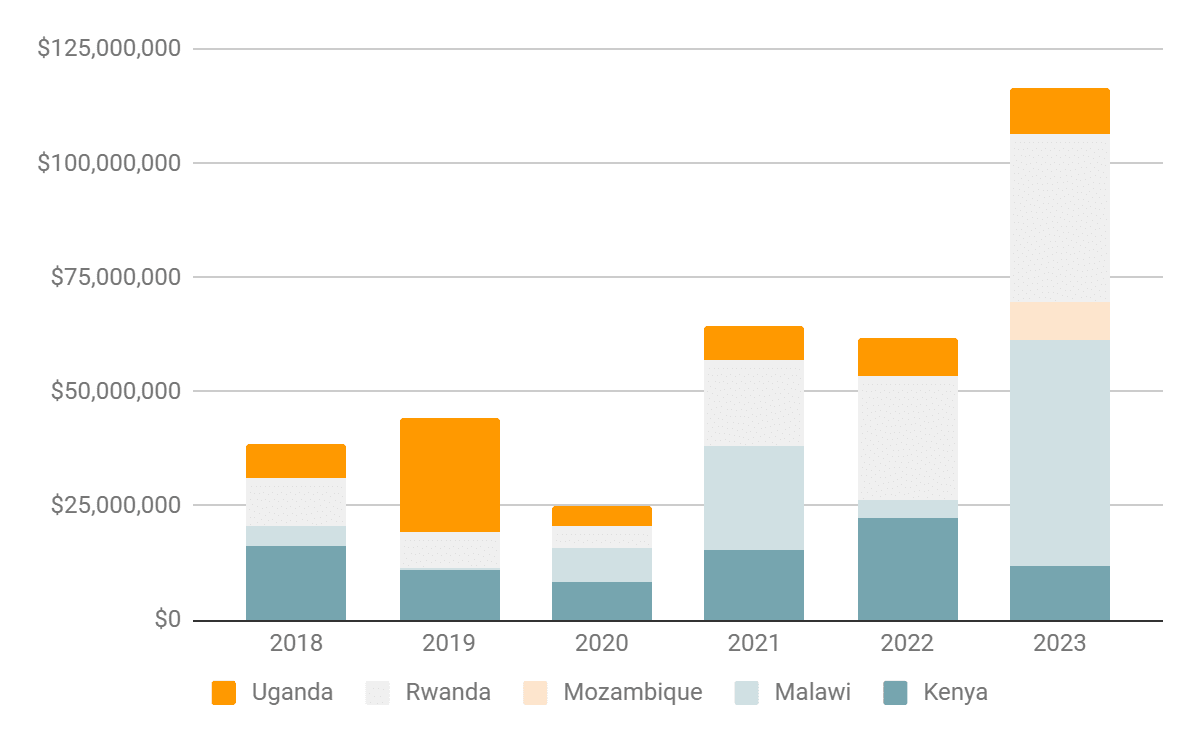Summary:
- The charity evaluator GiveWell increased their rating of the cost-effectiveness of GiveDirectly’s Cash for Poverty Relief program by 3-4x after reevaluating our work, including assessing new evidence.
- This update was driven by new estimates of direct cash’s positive impact on local economies, consumption, and child mortality, which show our work (past & present) is more impactful than they’d previously assumed.
- This update hasn’t changed GiveWell’s top charity and funding recommendations, but this could shift in the future.
- We’re excited about this update and look forward to continued conversations with GiveWell, as we continue to generate new evidence on cash’s long-term impact which may shift their assumptions again.
From GiveWell's post:
We estimate that this program is ~3-4x more cost-effective than we had previously estimated, and around ~30-40% as cost-effective as our marginal funding opportunity.
Nick Allardice (GiveDirectly's CEO) has posted this video.



On (1), I tend to agree and don't think a lot of the CEA on health even takes into account the cost of treatment purchases/copays and clinic transport (something I'm sure you have great data on!) which is not insignificant if your annual cash income is <$200 and your kid potentially gets infected multiple times per annum. Some CEA doesn't even include morbidity. But I don't think there's much scope for comparable medium term multiplier effects on a neighbourhood from typical health programs.
I think (2) is an important point. I've read studies before (not the Egger one which appears to have been the biggest factor here) which claim the remarkable finding that cash transfers had positive impact on things like domestic violence in neighbouring households that didn't receive them, and thought to myself have you not considered the possibility that people have noticed the outsiders with clipboards asking personal questions seem to be associated in some way with their neighbours getting unexpected windfalls, and started to speculate about what sort of answers the NGOs are looking for...
It's an interestingly large upward revision by GiveWell though, especially since they seem to have heavily discounted some of the study results
A quick look at Egger suggests their main novelty was that they considered positive spillover effects on other villages up to 2km away (whereas other studies didn't or may even have used those neighbouring villages as controls with increases in their income reducing the estimated cash transfer effect size). This seems plausible, though it also seems plausible they're bundling in other local effects with that. They seem to have plausible data that non-recipients are actually getting higher earned incomes by being paid to do more labour by recipients though, which is the sort of thing these programmes hope to achieve